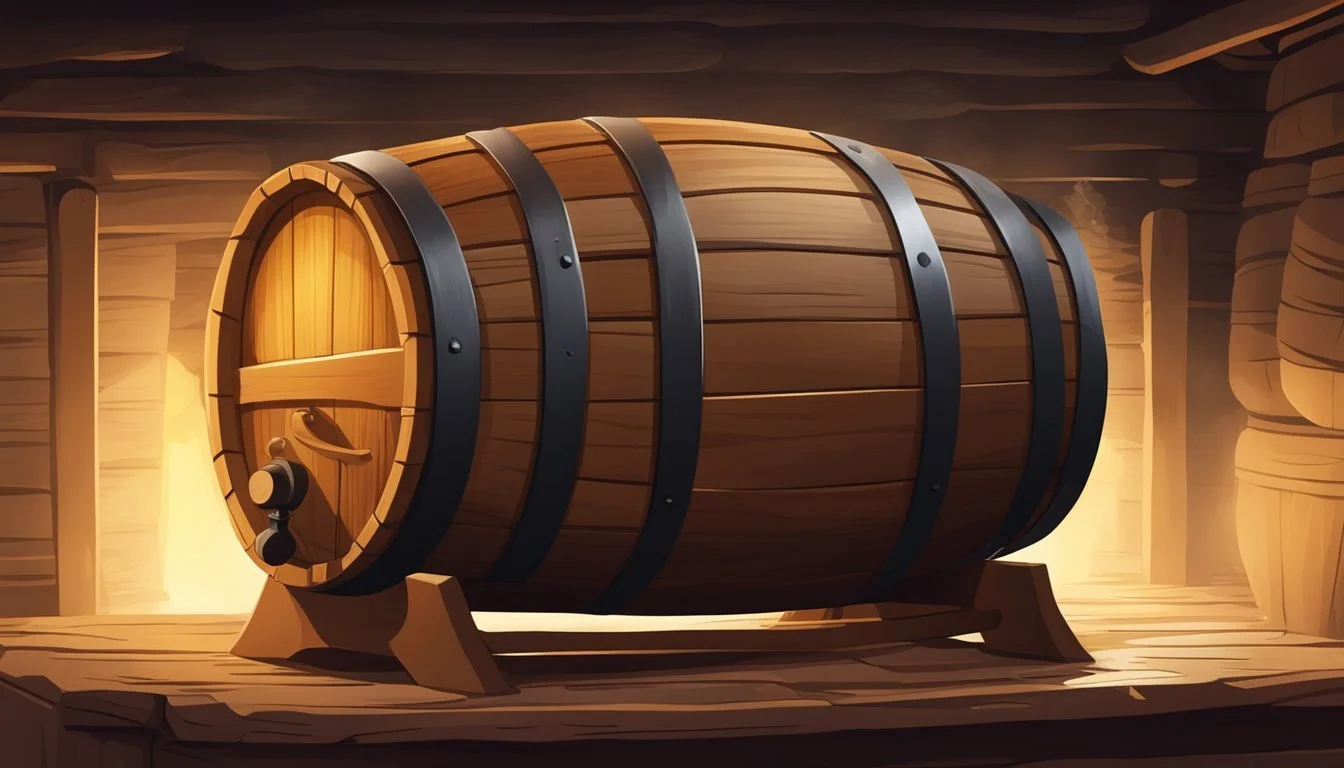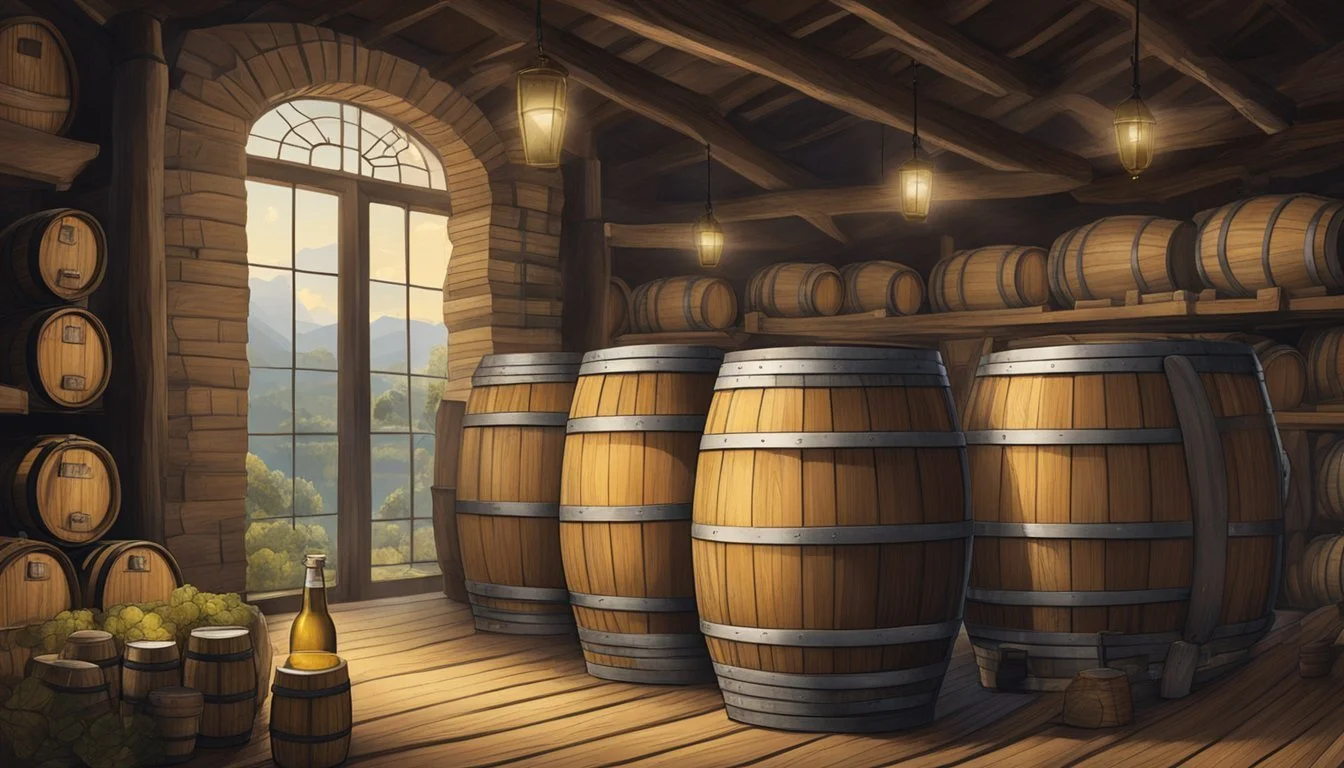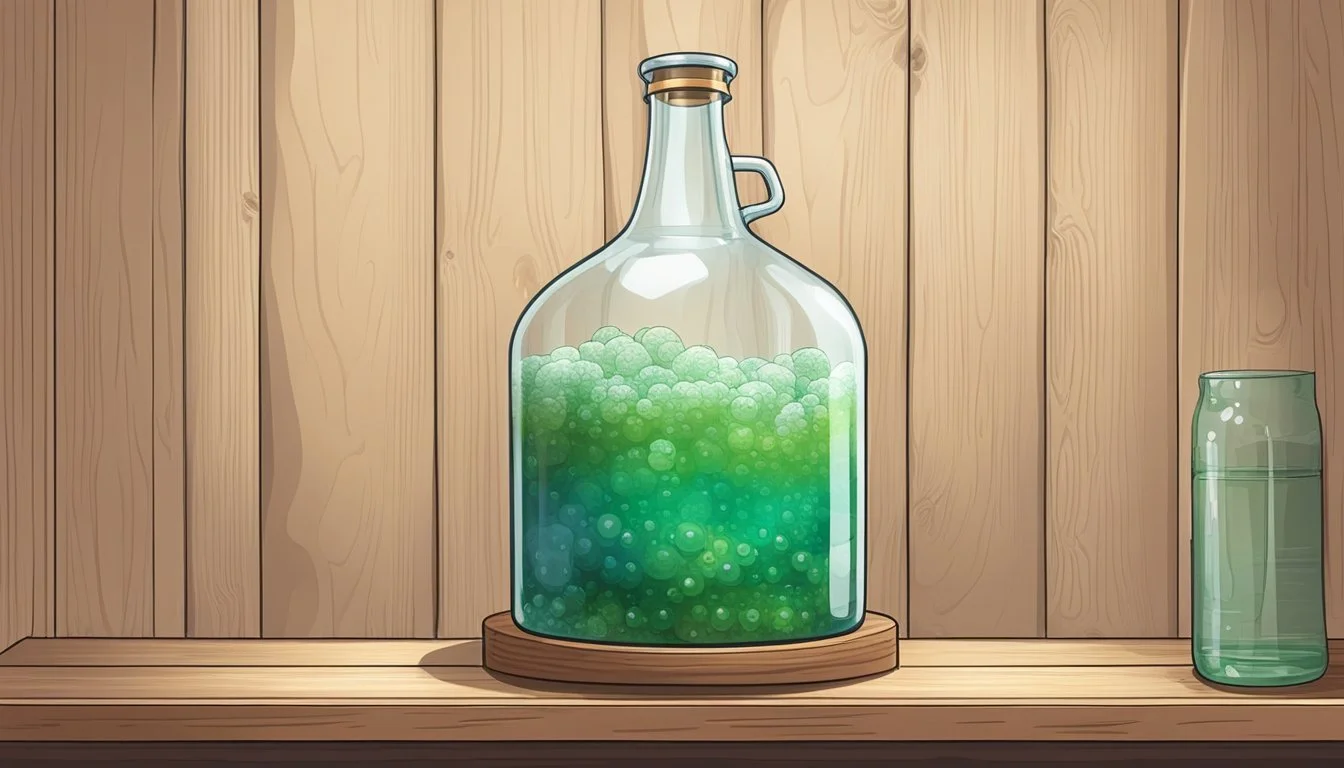How to Ferment Gueuze
Mastering the Art of Blended Lambic Beer Production
Gueuze represents an exquisite tapestry of complexity in the beer world, born from the tradition of blending lambics. This style of beer is intrinsically linked to the Lambic region of Belgium where it originated and is a testament to the art of fermentation. A gueuze is created by mixing 'old' lambic, which has matured for up to three years, with 'new' lambic, fresh from its primary fermentation. This process initiates a secondary fermentation within the bottle, resulting in a highly carbonated beer known for its sharp tartness and depth of flavor. The magic of gueuze lies in the mastery required to balance the characteristics of different lambic vintages, producing a harmonious end product that can continue to develop in complexity for years after bottling.
At its core, lambic is distinguished by spontaneous fermentation, where wild yeasts and bacteria native to the Senne valley impart a unique profile to the brew. Unmalted wheat, aged hops, and a notable absence of fermentation control contribute to lambic's distinctive profile—sour, dry, and often with funky, earthy undertones. This style serves as the canvas upon which gueuze is crafted, requiring skilled brewers to conjure the alchemy that turns a simple list of ingredients into a symphony of flavors.
Breweries dedicated to the craft of gueuze take great care in the blending process, understanding how each lambic's character will contribute to the final blend. The resulting gueuze is then bottled for further ageing, during which the beer undergoes refermentation, gaining its characteristic carbonation and complexity. As a result, gueuze stands as a testament to the time-honored traditions and nuanced craft of Belgian brewing, offering a unique experience with each bottle uncorked.
History and Tradition
The history and tradition of gueuze are deeply entwined with the brewing practices of Belgium, particularly within the Senne River Valley near Brussels, where Lambic and Gueuze have their roots.
Origins of Lambic and Gueuze
Lambic beer arose in the 13th century and is known for its spontaneous fermentation, a process unique to the region due to the specific microflora of the Senne Valley. Gueuze, often referred to as the "champagne of beers," was subsequently developed by blending young Lambic (one-year-old) with old Lambic (two to three years old), which undergoes a second fermentation in the bottle.
Belgian Brewing Heritage
Belgian brewing is marked by a high regard for tradition and quality. The country's Lambic beers, including gueuze, have been protected by the European Union's appellation regulations, securing their place as a distinct and esteemed product of Belgium. Breweries like Cantillon, among others in Brussels, maintain time-honored techniques, adhering strictly to the original methods of gueuze production.
Gueuze Within Brussels and the Senne River Valley
Gueuze has long been associated with the Brussels region. The Senne River Valley's unique environmental conditions foster the necessary yeasts and bacteria for Lambic fermentation. This intimate connection between geography and brewing practices underscores gueuze’s place as a jewel in the crown of Belgian Lambic traditions.
The Brewing Process
Gueuze, a complex and traditional beer, requires a meticulous brewing process involving specific ingredients, careful temperature control, and natural fermentation to achieve its unique flavor profile.
The Role of Malted and Unmalted Wheat
The grain bill for a Gueuze typically consists of 30-40% unmalted wheat with the remaining portion being malted barley. This ratio is crucial, as the wheat contributes to the beer's distinct body and haziness, while the barley provides the enzymatic power necessary for the mash process.
Boiling and Hop Usage
During the boiling stage, aged hops are often used for their preservative qualities rather than for bittering. The hops should be boiled for a long duration, which is important for the stability of Gueuze without imparting strong hop flavor or excessive bitterness to the final product.
Coolship Cooling and Wild Yeast Inoculation
After boiling, the hot wort is transferred to a coolship, a large, open, and shallow vessel. Here, the wort cools overnight, exposing it to wild yeasts and bacteria in the air, which are crucial for the spontaneous fermentation characteristic of Lambic beers.
Wort Transfer and Fermentation Dynamics
Once cooled, the wort is transferred into oak barrels where a range of fermentation activities unfold over months and years. The beer undergoes a complex fermentation journey — led by the wild yeasts previously inoculated — leading to the sour and cidery characteristics of Lambic, which is then expertly blended to craft Gueuze.
Blending and Fermentation
The precise combination of lambics of different ages initiates a complex fermentation process, resulting in the unique flavor profile of Gueuze.
Selecting Lambics for Blending
The selection process for blending lambics into Gueuze starts with choosing the right ages of lambic. Typically, a blend comprises three distinct age groups: one part young lambic, about a year old, full of fermentable sugars, and several parts of older lambics, two to three years old. These older lambics have matured, developing a complex array of flavors and reduced sugars, creating an environment conducive for refermentation when combined.
The Art and Science of Blending
Blending is both a craft and a scientific endeavor. An ideal ratio might include 5.0 gallons of the three-year-old lambic, 2.5 gallons of the two-year-old, and just over 1 gallon of the young lambic. The blender must consider the flavor profile of each component, as the younger lambic will contribute fermentable sugars and fresh microorganisms, while the older lambics provide complexity and stability. A carefully blended Gueuze can yield between 8.5 to 9.0 gallons, with each component carefully measured to achieve the desired balance. This process is essential in creating the foundation for secondary fermentation.
Secondary Fermentation and Maturation
After blending, the Gueuze is bottled for secondary fermentation, where it matures and carbonates. To encourage refermentation, the blend should retain some residual sugars, either from the younger lambic or, in some cases, by adding sugar. The aging process involves bacteria and wild bugs from the aged hops and the wooden vessels traditionally used for aging lambic. This secondary fermentation can contribute a standard amount of carbonation to the beer, with the final gravity of the blend closely reflecting that of the oldest component beer. It is this refermentation in the bottle that epitomizes the essence of Gueuze, infusing it with its characteristic effervescence and complexity.
Aging and Cellaring
Gueuze, a traditionally Belgian beer, acquires its complexity from the aging process and the conditions under which it's cellared. The interplay of time, temperature, and the characteristics of oak barrels are central to the development of its unique flavor profile.
The Importance of Time
Time is a critical factor in the maturation of Gueuze. This beer style is a blend of Lambics of different ages, typically involving a mix of one, two, and three-year-old batches. The older Lambics contribute depth and complexity, while younger ones add freshness and fermentable sugars that help to re-ferment the blend in the bottle. Patience is key – the secondary fermentation within the bottle can take several years to develop the desired flavors.
Condition and Temperature of Cellars
The conditions within the cellars where Gueuze is aged can significantly impact its quality. The cellar temperature should be stable, with an ideal range between 12-14°C (54-57°F). Fluctuations can disturb the yeast activity, affecting the beer's development. Oak barrels, commonly used for aging, allow for a slow ingress of oxygen, which helps to shape the Gueuze's distinctive sour profile.
Vintage Variation and Longevity
Each vintage of Gueuze can offer a different sensory experience due to variations in the blend and environmental factors during aging. Gueuze can be aged for years, even decades, with its flavor profile evolving over time. Collectors and connoisseurs value this longevity, as well-aged bottles can develop nuanced characteristics that are highly sought after. The knowledge of which vintages have aged well contributes to the enjoyment and appraisal of Gueuze.
Exploring the subtleties of the aging process and cellaring is imperative for anyone who wants to fully appreciate the multifaceted nature of Gueuze.
Tasting and Sensory Analysis
In tasting Gueuze, one must consider the unique flavor profile, evaluate the complexity and balance, and select the appropriate glassware to enhance the sensory experience.
Gueuze Flavor Profile
A Gueuze exhibits a distinct profile that combines sourness typical of sour beers, with layers of fruit and funk. The presence of Brettanomyces yeast contributes to a dry finish and can evoke flavors ranging from earthy to fruity. Citrus notes are common, alongside a lively carbonation that can influence the beer's sharpness and brightness on the palate.
Assessing Complexity and Balance
Gueuze's complexity is derived from blending lambics of various ages leading to an intricate interplay between sour, sweet, and bitter components. Evaluators should look for how well these elements are integrated. A well-balanced Gueuze should not allow any single aspect to overpower the others, instead presenting a harmonious combination that complements the beer’s layered nature.
Proper Glassware for Gueuze
To fully appreciate a Gueuze's aromatic and taste profile, one should serve it in the correct glassware. Tulip glasses are preferred due to their shape, which concentrates the aromatics and supports the foam head. Alternatively, straight-walled tumblers may be used, though they may not equally enhance the beer's complex characteristics. The choice of glass can impact the perception of carbonation and aromatics in Gueuze.
Serving and Food Pairings
To maximize the enjoyment of Gueuze, attention to serving temperatures and food pairings will enhance its unique flavors. This balanced sour beer pairs well with a variety of foods that complement its complex profile.
Recommended Serving Temperatures
Gueuze should be served at cellar temperature, ideally between 45°F and 55°F (7°C and 13°C). This slightly chilled range highlights the beer's subtle tartness and effervescence without muting its flavors.
Culinary Complements
The versatility of Gueuze allows it to pair well with a broad range of dishes. Cream sauces, with their rich profiles, contrast nicely with the beer's acidity. When choosing entrees, consider meals that can balance the beer's sourness without overpowering its character.
Cheese and Gueuze
A selection of cheeses can elevate the tasting experience with Gueuze. Opt for soft-ripened cheeses such as Brie or Camembert that offer creamy textures and earthy notes. These can harmonize beautifully with the beer's complexity.
Seafood and Gueuze
Shellfish and Gueuze are an exemplary pairing. The beer's crispness cuts through the richness of seafood, emphasizing the natural flavors. Oysters and mussels, (What wine goes well with mussels?) either in a simple broth or with a light cream sauce, pair particularly well with the tart beer.
Variations and Related Styles
Gueuze, or blended lambic, is merely the gateway into a broader universe of lambic-based beers, each with its own distinct character and flavor profile.
Fruit-Infused Lambics
Fruit-infused lambics, such as Kriek and Framboise, incorporate the vibrant flavors of cherries and raspberries respectively. Notable examples include Oud Beersel Oude Kriek and Tilquin’s Quetsche, which showcase the use of plums (quetsche). Other fruits commonly used are blackcurrant (Cassis), peach (Pêche), and apple, expanding the taste spectrum of these lambics significantly.
Kriek: Cherries, sometimes with pits left in to give an almond flavor
Framboise: Raspberries for a sweet and tart profile
Cassis: Blackcurrant for a deep berry complexity
Pêche: Peach for a soft and fragrant essence
Comparison with Other Sour Beers
While lambics are a hallmark of Belgian brewing, they share the sour beer category with other styles like Berlin Weisse and American Wild Ales. However, lambics, including gueuze, are unique due their spontaneous fermentation and long maturation process, typically using aged hops and specific yeast strains native to the Zenne Valley in Belgium. Girardin, another exemplary producer, showcases the distinction of lambic beers with their well-balanced sourness and earthy notes.
Regional Differences within Belgium
Within Belgium, regional differences contribute to the nuances between lambics. The Senne Valley and Pajottenland are the heartlands of lambic production, and each brewery, from Oud Beersel to Girardin, has its own closely-guarded blend of yeasts and production methods, affecting everything from acidity to effervescence. Faro, a lesser-known style, is a sweetened version of lambic, typically featuring the addition of caramel or brown sugar to balance the inherent tartness.
Home Brewing Gueuze
When crafting Gueuze at home, one must pay close attention to recipe formulation, the unique process of spontaneous fermentation, and the intricacies of aging and blending the lambics.
Gueuze Recipe Development
Developing a Gueuze recipe commences with selecting the right blend of grains. Traditionally, brewers utilize a mix of 70% barley malt and 30% unmalted wheat, creating a suitable environment for the yeast and bacteria necessary for fermentation. The mash regime is a nod to the turbid mash of Wallonia, involving a series of temperature steps that can be simplified for home brewing. Wyeast 3278 is recommended for those who cannot perform spontaneous fermentation, as it contains a blend of yeast and bacteria found in authentic lambics.
Spontaneous Fermentation at Home
Spontaneous fermentation, the soul of lambic beers, depends on exposing the wort to the air to inoculate with wild yeast and bacteria. Home brewers can imitate this by cooling the wort in an open-air environment conducive to native microflora. It's essential to monitor and control this environment to reduce the risk of unwanted contaminants. One must then transfer the wort to fermentation vessels, ensuring an airlock is in place to protect it while allowing gases to escape.
Aging and Blending Considerations
The art of Gueuze lies in the blending of lambics of different ages. Typically, a Gueuze is composed of 1-year, 2-year, and 3-year old lambics. For home brewers, maintaining a schedule for brewing and aging unblended lambic is crucial. After maturation, the blending process is delicate and subjective; taste tests should guide the proportion of each lambic in the final composition. Once blended, the Gueuze requires a secondary fermentation in the bottle, so patience is vital as the beer develops complexity over time.
The Future of Gueuze
The evolution of Gueuze is tethered closely to the advancement of blending techniques, sustainability practices, and recognition on the global stage. As a unique lambic blend, these factors will shape its trajectory.
Innovation in Blending Techniques
Craft brewers continuously experiment with blending techniques to enhance the complexity and flavor profile of Gueuze. They aim to refine the balance between young and mature lambics, preserving the traditional essence while infusing innovative twists. These could involve exploring the use of different wood barrels or incorporating varied strains of yeast and bacteria.
Sustainability and Natural Ingredients
Sustainability is becoming pivotal in beer production, and brewers of Gueuze are no exception. They increasingly prioritize local, natural ingredients and environmentally friendly practices. This commitment is not only ethical but also essential in maintaining the authenticity of Gueuze, as the natural microbiota contributes to its distinct flavor.
The Global Growth of Lambic and Gueuze
Gueuze is experiencing a renaissance as global interest in complex, artisanal beers surges. The exportation and education of lambic and its blends are expanding its footprint worldwide. Breweries are reaching new markets, sharing the depth of lambic culture and the unique taste of Gueuze, signaling a period of significant growth in its appreciation and consumption.





